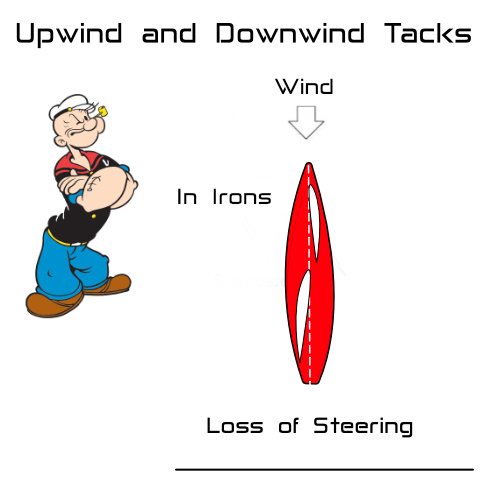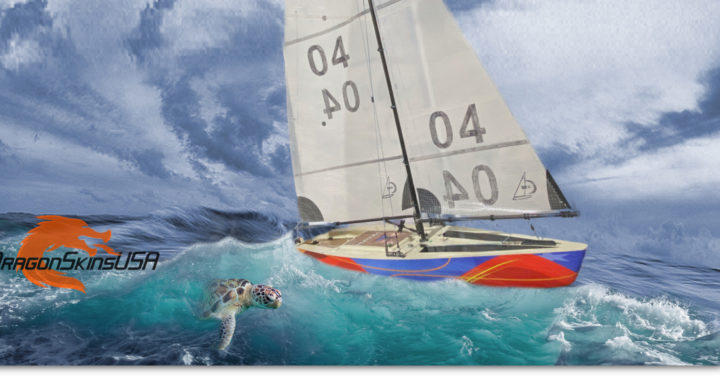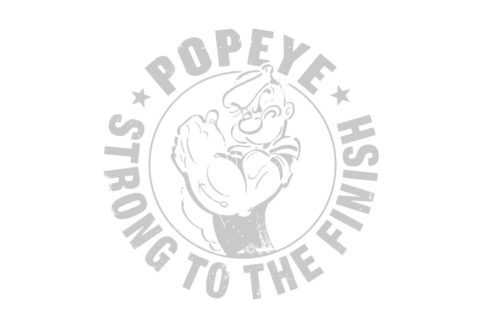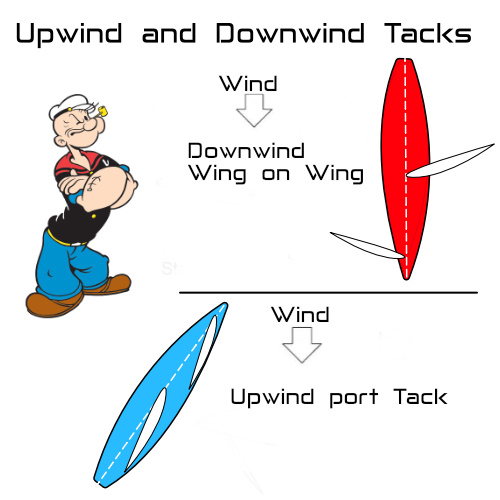Sailing 1.1 for Newbies
according to Popeye and ChatGBT
Sailing downwind and upwind represent two different points of sail, and they involve distinct challenges, sail positions, and strategies.
Upwind Sailing (Windward):
- Direction: Upwind refers to sailing against the wind, where the bow of the boat is pointing into the wind or slightly off the wind.
- Sail Position: When sailing upwind, the sails are trimmed in tightly. The mainsail is typically flat, and the headsail (jib or genoa) might be partially rolled in, depending on wind strength.
- Challenges: Sailing upwind is challenging because boats cannot sail directly into the wind due to how sails work; they need to tack (sail in zigzag patterns) to make progress upwind. This involves sailing at angles to the wind, switching sides during tacks, and requires careful navigation and sail trim to maintain the most efficient course and speed.
- Strategy: Upwind sailing involves finding the best angle to sail close to the wind while still maintaining good boat speed. Sailors need to constantly adjust the sails and the boat's heading to optimize their course and minimize the distance sailed.
Downwind Sailing (Leeward):
- Direction: Downwind refers to sailing with the wind, where the wind is coming from behind the boat.
- Sail Position: When sailing downwind, the sails are eased out to catch as much wind as possible. The mainsail might be let out completely, and the headsail is often pulled to the opposite side of the boat, making a wing-on-wing configuration. This maximizes the sail area exposed to the wind.
- Challenges: Sailing downwind is generally easier in terms of steering, as the wind is pushing the boat along. However, controlling the sails to catch the wind efficiently without accidentally jibing (sudden change in wind direction across the stern, which can be dangerous) requires attention and skill. In very light winds, boats might struggle to maintain enough speed to steer effectively.
- Strategy: Downwind sailing involves finding the most stable and efficient configuration for the sails. This often includes the use of additional downwind sails like spinnakers, which are large, lightweight sails specifically designed for downwind sailing. Sailors need to balance the sails and adjust their course to catch the wind at the right angles and maintain optimal speed.
- In summary, upwind sailing requires careful navigation and frequent changes in sail trim and direction to make progress against the wind. Downwind sailing involves catching the wind efficiently to maintain speed while avoiding sudden changes in sail position that could lead to loss of control. Both techniques require skill and attention to sail trim, boat handling, and wind conditions.
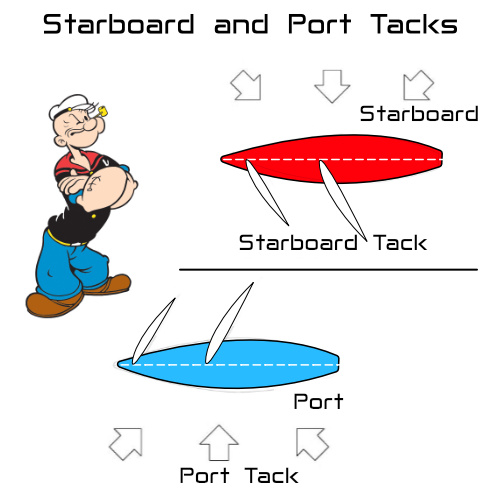
A sailboat is on starboard tack when the wind is coming from the port (left) side of the boat. In other words, when the wind is blowing over the right side of the boat, it is said to be on starboard tack. On starboard tack, the boom (the horizontal spar that holds the bottom edge of the sail) will typically be on the left side of the boat, and the sails will be filled with wind.
Conversely, port tack is when the wind is coming from the starboard (right) side of the boat, the boat is said to be on port tack. On port tack, the boom will be on the right side of the boat, and the sails will be filled with wind from the opposite direction.
Understanding the tack of a sailboat is important for sailors because it determines the right of way when encountering other boats and affects the strategy for sailing upwind and downwind. On opposite tacks, the boat on starboard tack generally has the right of way over a boat on port tack to avoid collisions, as per the "starboard tack" rule in the International Rules of the Road for vessels.
When a sailboat is "in irons," it means that the boat has turned into the wind and the sails are luffing (flapping) because the wind is no longer powering the boat forward. In this situation, the boat loses its forward momentum and becomes stuck, unable to make progress or steer in any direction.
Being in irons typically occurs when a sailor tries to tack (change direction by turning the bow of the boat through the wind) but fails to complete the maneuver successfully. If the boat does not gather enough speed or if the helmsperson does not turn the boat sharply enough into the wind during the tack, the boat can end up in irons. This can also happen when the boat is sailing too slowly and loses steerage in a headwind.
To get out of irons, the sails need to be trimmed properly. Usually, this involves pushing the bow of the boat away from the wind, allowing the sails to fill with wind on the opposite side. Once the sails are filled again, the boat can regain steerage and resume sailing. This maneuver is often called "backing the sails" or "backing the jib/genoa" and is done by turning the rudder away from the wind while adjusting the sails until they fill with wind from the opposite side, providing the necessary forward motion to exit the irons.
